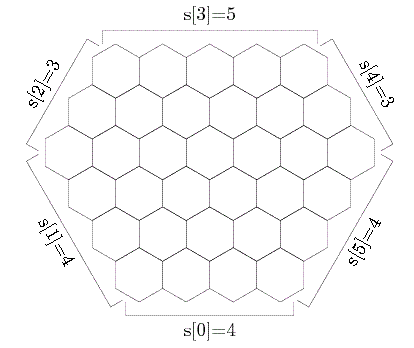Problem Statement
Consider a hexagonal grid with 6 sides, with the side lengths given by the int[] s (in the clockwise order), as shown in the following picture:

Count the number of ways to color each cell with one of two colors, black or white, such that every non-border black cell has exactly a black neighbors, and every non-border white cell has exactly b white neighbors (a cell is called non-border if and only if it has exactly 6 neighbors in the grid).
Definition
| Class: | BeautifulHexagonalTilings |
| Method: | howMany |
| Parameters: | int[], int, int |
| Returns: | int |
| Method signature: | int howMany(int[] s, int a, int b) |
| (be sure your method is public) | |
Constraints
Examples
| |||
Returns: 2 | |||
| |||
| |||
Returns: 2 | |||
| |||
| |||
Returns: 30 | |||
| |||
Returns: 213 | |||
| |||